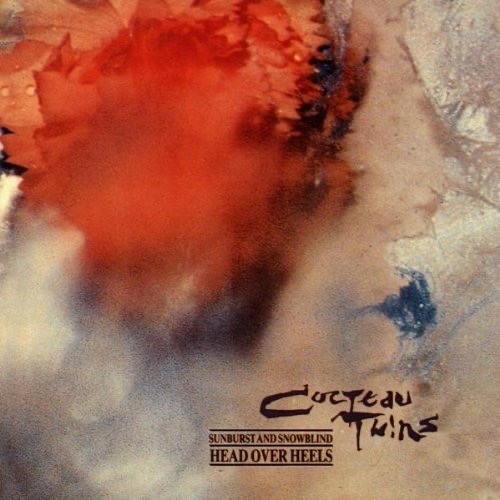#Guillermo Lorca garcía
Photo



Surrealism paintings by Guillermo Lorca García
#Guillermo Lorca garcía#surrealism#surrealist#animals#humans#figures#colour#colourful#vibrant#landscape#painting#oil painting#art#fine art#contemporary art#conceptual art#modern art#surrealist art#art history#art posts
867 notes
·
View notes
Text

Detail from "La niña azul y sus perros" by Guillermo Lorca García (2016)
#art#chilean#chilean art#latino artist#modern art#contemporary art#guillermo lorca garcía#latino art
5 notes
·
View notes
Photo

Guillermo Lorca García-Huidobro. The Hunt for the Mermaid
148 notes
·
View notes
Text

Guillermo Lorca García-Huidobro
6 notes
·
View notes
Text
VUELVE MARUJA MALLO
Se publica el Catálogo Razonado de la obra pictórica de la artista
Francisco R. Pastoriza
Se trata de un gran trabajo documental sobre las pinturas de Maruja Mallo, un ingente esfuerzo editorial que enriquece la historiografía del arte español de vanguardia del siglo XX y un meritorio proyecto en el que han colaborado la Fundación Arte y Mecenazgo, la Galería de Arte Guillermo de Osma…
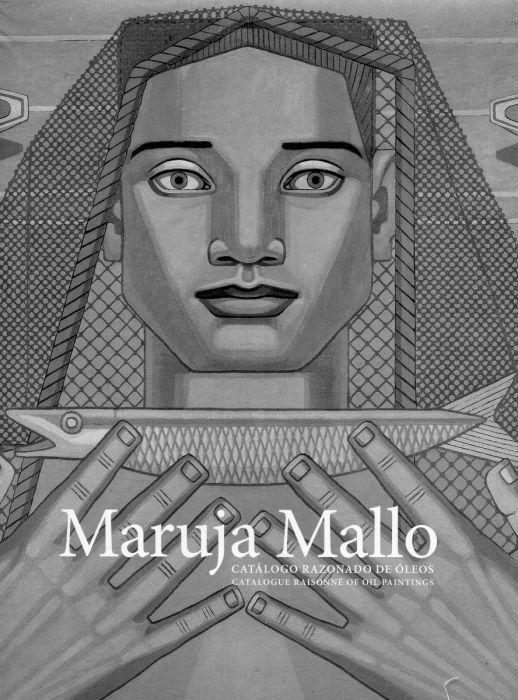
View On WordPress
#Alberti#Benjamín Palencia#Buñuel#Bueu#Cocteau#Dalí#Estrella de diego#Fundación Azcona#Gabriela Mistral#Guillermo de Osma#Guillermo de Torre#Jean Arp#Joan Miró#Joaquín Torres García#José Luis Ferris#Juan Pérez de Ayala#Lorca#Louis Aragon#Magritte#Manuel Mezquita#Mará Escribano#Maruja Mallo#Matila Ghyka#Ortga y Gasset#Picasso#Rafael Cansinos Asens#Ramón Gómez de la Serna
4 notes
·
View notes
Text

Guillermo Lorca, Sade and the cat, oil on canvas (2015-16)
2 notes
·
View notes
Text

Guillermo Lorca García-Huidobro
3 notes
·
View notes
Text
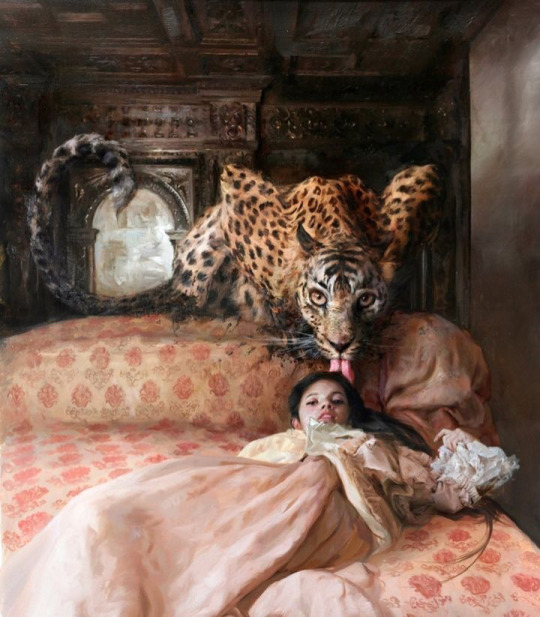
Guillermo Lorca García Huidobro
38 notes
·
View notes
Photo

Guillermo Lorca García-Huidobro
“The Hunter”
Oil on board
68 notes
·
View notes
Text

“The English Bed” by Guillermo Lorca García H.
7 notes
·
View notes
Photo

The English Bed, Guillermo Lorca García Huidobro, Oils, 2020
2 notes
·
View notes
Text
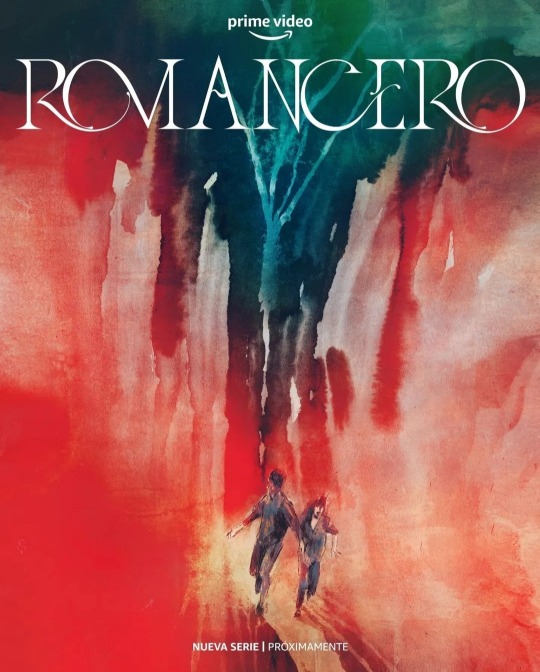
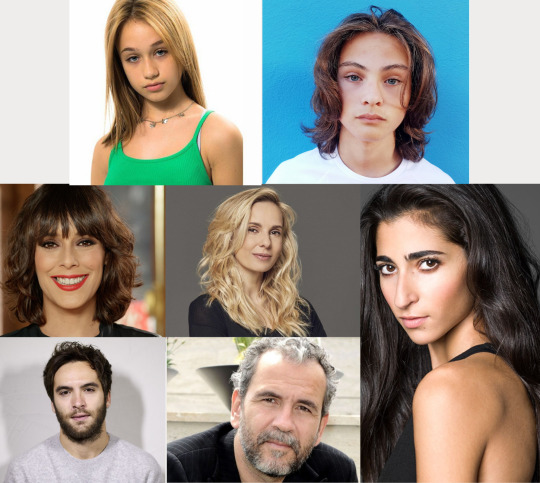
@asongofstarkandtargaryen I have found about a new upcoming horror series, Romancero.
This is the info I have found until now:
The cast of the series will be led by Sasha Cócola (Techo y comida, Los hombres de Paco) and the Serbian actress Elena Matic (Kineski zid, Bon voyage). The little that is known about the synopsis is related to its characters, since they are the ones who will give life to Jordán and Cornelia. He is not a boy and he is not a man and she is a girl whose childhood has been stolen. Turned into some strange teenagers, they decide to change their lives and flee from the desert of southern Spain, pushed by circumstances. In their escape from a cruel Andalusia, as real as it is mythical, they come across demons, witches and blood drinkers.
They are accompanied on this adventure by Belén Cuesta (La trinchera infinita, Paquita Salas, La llamada, Cristo y Rey, La casa de papel, Vis a Vis, El Aviso), Ricardo Gómez (El sustituto, La ruta, Cuéntame cómo pasó, Vivir sin permiso, La Casa entre los cáctus, 1898: Los últimos de Filipinas), Guillermo Toledo (Los favoritos de Midas, Crimen perfecto, 7 vidas, Historias de Lavapiés, Juana La Loca, Black is Beltza), the Argentinian actress Julieta Cardinali (Ecos de un crimen, Maradona: Sueño Bendito, Los ricos no piden permiso, Valentín, Carta a Eva) and Alba Flores (La casa de papel, Las cartas perdidas, El tiempo entre costuras, Vis a Vis, Sagrada familia). In addition, to complete the information about the series, Romancero will be set on locations in Almería and Madrid, two of the cities that host the filming of the fiction, in different natural settings in the province of Almería, while the interiors will be filmed in Madrid.
Jordán and Cornelia are two helpless youngsters on the run from the forces of the law, powerful supernatural creatures, and themselves. The series, which has just started filming, will consist of six episodes of 30 minutes each and its action takes place in a single night.
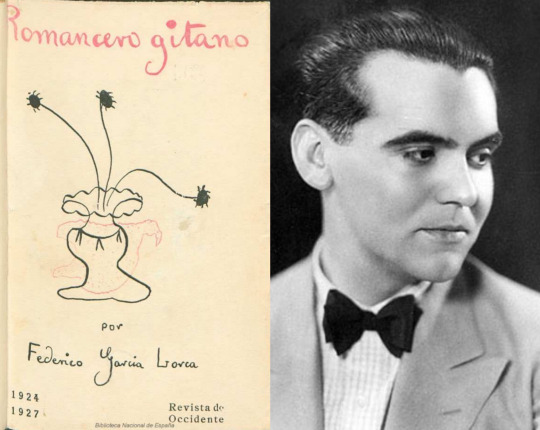
"With echoes of the famous Romancero Gitano, a poetic work by Federico García Lorca (Fuente Vaqueros, Granada, June 5 of 1898 - Víznar, Granada, August 18 of 1936), it seems that the references of Romancero will be very different from each other. Comics, Gothic literature, the stories of witches, ghosts and creatures, the poetry of Federico García Lorca or esotericism, all of this in the enveloping setting of a desert and cruel South, where the clichés of rural Spain and more cañí they coexist with supernatural creatures, violence, revenge, redemption and love”, comments the information provided. "We love that Romancero is a horror series with a strong local point of view, an approach that allows us to offer a different and updated vision of our traditions and culture," says María José Rodríguez, Head of Spanish Originals, Amazon Studios. "We want to offer the public unique stories and different voices that resonate and impact. We are convinced that Romancero will not leave anyone indifferent," says Rodríguez.
"We are very happy to work with Fernando Navarro and Tomás Peña on a project as distinctive as Romancero," James Farrell, Head of International Originals, Amazon Studios, told the press. On behalf of THE MEDIAPRO STUDIO, the producer is Laura Fdz. Espeso and Javier Méndez, Fernando Navarro, Alejandro Florez and Maya Maidagan serve as executive producers. Everyone will be looking for the new original Spanish youth horror series that will replace the gap left by El Internado: Las Cumbres in the new Prime Video catalog. Prime Video has announced its upcoming Spanish original series “Romancero,” a fast-paced horror story with supernatural overtones written by the horror author and screenwriter Fernando Navarro (Venus, Verónica) and directed by Manson collective member Tomás Peña, in which It will be his first foray into a fiction production, after directing video clips for artists such as Rosalía, C. Tangana, Katy Perry, Raw Alejandro, Bad Gyal or The Prodigy.
~~~~~~~~~~~~~~~~~~~~~~~~~~~~~~~~~~~~~~~~~~
Well, I find it very interesting that Romancero Gitano is a source of inspiration for a series, another work of Lorca was adapted some years ago into a film, La Novia (based on the play Bodas de Sangre).
The book is composed of 18 poems: Romance de la luna, luna, Preciosa y el aire, Reyerta, Romance sonámbulo, La monja gitana, La casada infiel, Romance de la pena negra, San Miguel, San Rafael, San Gabriel, Prendimiento de Antoñito el Camborio en el camino de Sevilla, Muerte de Antoñito el Camborio, Muerto de amor, Romance del emplazado, Romance de la Guardia Civil española, Martirio de Santa Olalla, Burla de don Pedro a caballo and Thamar y Amnón.
So, maybe the stories of the characters are inspired on the poems.
It was published in 1928, so maybe the series will be set on the 1920's, although it hasn't been told any concrete period, I don't know if they will through a modern day setting.
Romancero Gitano isn't a horror book but maybe some elements of the poems like metaphors or symbolisms could be taken for some kind of magical elements (and some of the metaphors are a bit strange due to surrealism influences, although surrealism is more a thing from Poeta en Nueva York, writen between the years 1929-30, published in 1940 in Mexico). The other inspiración for the series is Gothic literature, so that would be the source of supernatural elements.
Like, the Romancero book mainly are stories (some of them tragical) about Andalusian Romani people and their culture, and also deals with the marginalization and oppresion suffered by the Romanis because of the Civil Guard (the Spanish Gendarmerie).
Taking a look at the cast for Romancero, Alba Flores is Romani. She's from the Flores family, a famous Andalusian Romani family of artists, in fact Alba's grandmother was the flamenco dancer and singer Lola Flores.
An interesting aspect from Romancero Gitano is that Lorca mixed elements from the literary movements from the early 20th century and the style of poetry from the past, like the "Romancero viejo", that is a collection of anonymous poems from oral tradition from the Iberian Peninsula from the Middle Ages that were later published in books between the 15-16th centuries. Then there's the "Romancero nuevo", that is the total of the writen poetry of known authors since the 16th century (although it's common to focus on the poetry from the 16-17th centuries mainly).
Talking about symbolism, these are the main symbols used by Lorca in Romancero Gitano (although some of them are very common in other of his works):
• Metals (knives, anvils, rings...): the life of Romani people and death.
• Air or wind: tragedy, male eroticism aggressive and violent.
• Mirror: home and sedentary life.
• Water: (in motion) life, (at rest) stagnant passion or death.
• Well: stagnant passion or death
• Horse: unbridled passion that leads to death. It could also mean virility, wild passion or freedom.
• Moon: It is the most used by Lorca, it appears 218 times. Its symbolism depends on how it appears. If it is red it means painful death; black, simply death; big means hope; pointy, has an erotic connotation. I could also mean femininity or sensuality.
• Rooster: sacrifice and destruction of the Romani
• The Civil Guard: they represent authority, therefore symbols of destruction and death over the Romani
• Alcohol: negativity.
• Milk: the natural.
• Wicker rod: lordship, nobility, dignity and elegance of the Romani
•Color green: death. It could also represent love frustration, forbidden desire and male sexual instinct
• Color black: death.
• Color white: life, light.
• Roses: blood
• Rider: omen of death
• Fish: associated with sexuality and dawn
• Blood: sexual instinct and omen of death
I wonder if this symbols will be shown in some kind of way.
For example the symbol of the green color meaning death can be noted in the poem Romance sonámbulo, like in this case the green that is constantly used for descriving the woman or her environment means that is going to die/is dying, and she couldn't meet her lover again. Then there's other symbols like the moon that means death too and the aljibe (a water cistern) is water at rest, so it could also mean death. It could be that the woman got drown in the aljibe, and maybe the civil guards are involved or responsible for her death.
And also metals could be a death symbol, and the eyes of the woman are described as "cold silver", maybe a way of saying that her eyes are grey.
Verde que te quiero verde.
Verde viento. Verdes ramas.
El barco sobre la mar
y el caballo en la montaña.
Con la sombra en la cintura
ella sueña en su baranda,
verde carne, pelo verde,
con ojos de fría plata.
Verde que te quiero verde.
Bajo la luna gitana,
las cosas le están mirando
y ella no puede mirarlas.
*
Verde que te quiero verde.
Grandes estrellas de escarcha,
vienen con el pez de sombra
que abre el camino del alba.
La higuera frota su viento
con la lija de sus ramas,
y el monte, gato garduño,
eriza sus pitas agrias.
¿Pero quién vendrá? ¿Y por dónde...?
Ella sigue en su baranda,
verde carne, pelo verde,
soñando en la mar amarga.
*
- Compadre, quiero cambiar
mi caballo por su casa,
mi montura por su espejo,
mi cuchillo por su manta.
Compadre, vengo sangrando,
desde los montes de Cabra.
- Si yo pudiera, mocito,
ese trato se cerraba.
Pero yo ya no soy yo,
ni mi casa es ya mi casa.
- Compadre, quiero morir
decentemente en mi cama.
De acero, si puede ser,
con las sábanas de holanda.
¿No ves la herida que tengo
desde el pecho a la garganta?
- Trescientas rosas morenas
lleva tu pechera blanca.
Tu sangre rezuma y huele
alrededor de tu faja.
Pero yo ya no soy yo,
ni mi casa es ya mi casa.
- Dejadme subir al menos
hasta las altas barandas,
dejadme subir, dejadme,
hasta las verdes barandas.
Barandales de la luna
por donde retumba el agua.
*
Ya suben los dos compadres
hacia las altas barandas.
Dejando un rastro de sangre.
Dejando un rastro de lágrimas.
Temblaban en los tejados
farolillos de hojalata.
Mil panderos de cristal,
herían la madrugada.
*
Verde que te quiero verde,
verde viento, verdes ramas.
Los dos compadres subieron.
El largo viento, dejaba
en la boca un raro gusto
de hiel, de menta y de albahaca.
- ¡Compadre! ¿Dónde está, dime?
¿Dónde está mi niña amarga?
- ¡Cuántas veces te esperó!
¡Cuántas veces te esperara,
cara fresca, negro pelo,
en esta verde baranda!
*
Sobre el rostro del aljibe
se mecía la gitana.
Verde carne, pelo verde,
con ojos de fría plata.
Un carámbano de luna
la sostiene sobre el agua.
La noche se puso íntima
como una pequeña plaza.
Guardias civiles borrachos,
en la puerta golpeaban.
Verde que te quiero verde.
Verde viento. Verdes ramas.
El barco sobre la mar.
Y el caballo en la montaña.
Now I'm remembering about symbolisms of Lorca's works that could be hinted in other fictions, although it's more like a theory/headcanon from a certain part of the Emdt fandom here on Tumblr, is that in El Ministerio del tiempo, Julián is the origin of the symbolism green=death. In this post there's the one in which the idea was pointed, although it points something more general, not concretely being a symbol for death, because depending on the work or the context, green can be also a symbol for life, rebeldy and desire for freedom. It might seem a little weird, but I will develop later.
Lorca's character makes his debut in the season 1 finale 1×08, La leyenda del tiempo, set on 1924 (Lorca was 26 years old in 1924, although Ángel Ruiz, the actor who plays Lorca is much older) that clearly shows references or takes themes from some of his works, like the poem Fábula y rueda de los tres amigos from Poeta en Nueva York and the poem La Leyenda del tiempo (the title of the episode comes from this poem) from the play Así que pasen cinco años , but indirectly could be a little from Romancero Gitano.
Like, firstly in the episode it's shown a special connection between Julián and Lorca through dreams, and their shared dreams of the episode depict Maite's death.
Something like the eye colors of an actor may seem something trivial, but yeah, Rodolfo Sancho's eyes are green, although sometimes it can't be appreciated well, although for example there's a close up to Julián's eyes at the end of episode 1×07 Tiempo de Venganza , and Mar Ulldemolins' eyes, the actress who plays as Maite, are also green.
Just by the end of the episode Julián tries to save Maite but he fails, and it resembles a bit the situation of the poem where the traveler is going to meet his lover, but she died and he couldn't do anything to save her. But at the end in the season 4 finale he finally saved her.
Next there's the issue of Lorca's death, and Julián is worried about and wanted to warn Lorca about his death but he didn't do it, so in season 4 he did it, although Lorca accepted his fate.
This is kind of a joke but in the first seasons Julián is the Margaery Tyrell of Emdt, like the ones who get married with them probably will die soon, in one case Renly and Joffrey (+Tommen in GOT) and then Maite and Amelia.
Between Amelia and Julián there was the thing about the fake engagement that started on episode 1×04 so Amelia's mother doesn't annoy her with trying to push her into an arranged marriage, and then what it's known from Amelia's tomb and the photos, the wedding, their daughter and Amelia's death, and in episode 8 they me their grandaughter Silvia (played by Iria del Río, who has participated in some period dramas like La catedral del mar and Las chicas del cable). Although after what happened in the following seasons, that future will never happen.
I was thinking about the Emdt showrunners Javier and Pablo Olivares. Pablo had Amyotrophic Lateral Sclerosis and the first season of Emdt was his last work (in the last previous years the Olivares brothers worked on period dramas like Isabel or Víctor Ros) and there could be some personal aspects reflected on ths series in some character plots, for example following this theme, there's no cure for ALS and there's the struggle of both brothers towards Pablo's death, from Pablo's perspective, knowing that he's going to die soon, like Amelia visiting her own tomb in the first seasons, knowing she's going to die in 5-4 years, although she didn't knew about the cause of her death (that's a thing for fan theories); Pablo and Javier facing Pablo's future death, reflected in Julián and Lorca, Julián told Lorca that he'll die and Lorca accepts it and Julián deals with it; iI would say that this also could be seen in the Amelia &Julián part, although maybe Julián isn't as much emotionaly involved into it but he cares about Amelia (Julián is more focused on Maite and maybe the thing about knowing that he will allegedly marry, have a daughter and lose someone again it'a a bit hard to process);and there's the last part of Javier mourning his brother, that could be represented in Julián's mouring over Maite's death.
#romancero#upcoming series#sasha cócola#elena matic#belén cuesta#alba flores#julieta cardinali#ricardo gómez#guillermo toledo#long post#fernando navarro
7 notes
·
View notes
Text

Guillermo Lorca García - The English Bed
6 notes
·
View notes
Text

Guillermo Lorca García
3 notes
·
View notes



